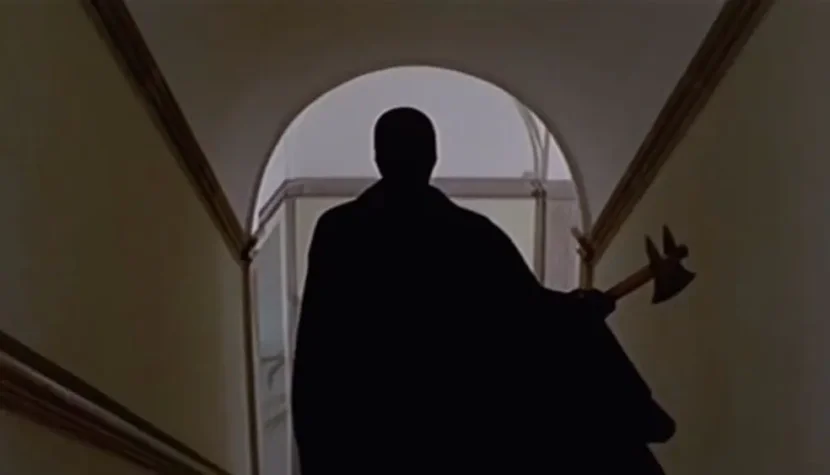SLAUGHTER HOTEL. A masked killer spreads terror in a psychiatric clinic

In “Slaughter Hotel”, a masked killer spreads terror in a psychiatric clinic for wealthy women who love to undress.
In a small castle somewhere in the Italian countryside, there is a sanatorium for wealthy women with mental disorders. Therapy is conducted by Professor Osterman and Dr. Clay, and among the patients are, for example, Cheryl, a failed suicide attempt; Ruth, who suffers from aggressive outbursts; Anne, a nymphomaniac; and Mara, who is engulfed in depression. The treatment methods are unconventional: there is no sign that the doctors use any medication, and the recovering patients are free to move around the clinic grounds, spending time with the staff in conversation and entertainment. Some of the hospital employees even form emotional and sexual relationships with the patients. One day, a masked man dressed in black appears in the area and starts killing patients and nurses with weapons found in the castle: a dagger, a sword, a crossbow, etc. The management delays notifying the police to avoid damaging their reputation.

Fernando Di Leo began his film career as a screenwriter, collaborating on films like “A Fistful of Dollars” (1964) and “For a Few Dollars More” (1965) by Sergio Leone, “Django” (1966) by Sergio Corbucci, and “Massacre Time” (1966) by Lucio Fulci. He later took up directing, with his most famous works belonging to the “poliziotteschi” genre, including “Caliber 9” (1972), “The Italian Connection” (1972), and “The Boss” (1973). Di Leo also ventured into “giallo”, as shown in “I ragazzi del massacro” (1969) and “Slaughter Hotel” (1971). Commenting on the latter film on the DVD audio track, Di Leo admitted that he was assigned to the project almost by chance, but found the idea of setting a psychiatric institution in a castle equipped with easily accessible torture tools so absurd that he decided to push the film to extremes. He certainly achieved his goal.
The premise of Di Leo and Nino Latino’s script is reminiscent of Edgar Allan Poe’s story “The System of Doctor Tarr and Professor Fether” (adapted in 2014 by Brad Anderson as “Stonehearst Asylum”), which also featured a psychiatric clinic governed by unusual rules. The similarities end there, however, as Poe’s work was a satire on 19th-century medical practices, while Di Leo’s film is a mixture of softcore porn, “giallo”, and exploitation. While eroticism in most “gialli” was merely an addition to the murders, in “Slaughter Hotel” it’s quite the opposite: the masked killer’s activities serve as a pretext to showcase the erotic escapades of the patients and staff. Thus, the creators do not shy away from scenes of explicit sex, sensual buttock massages, and full frontal nudity. The scene of female masturbation is shown so explicitly that it verges on hardcore pornography.

This film does not stand out among the typical Eurotrash productions, nor does it reach the level of “giallo” classics by Mario Bava or Dario Argento. So what saves Di Leo’s film from complete failure and oblivion? The inventive, choppy editing by Amadeo Giomini, reminiscent of later experiments by Nicolas Roeg; the music by Silvano Spadaccino, which includes light cocktail compositions and “musique concrète” pieces in the spirit of the Polish Radio Experimental Studio; and a cast of beautiful and talented actresses, especially Rosalba Neri (Anne), Margaret Lee (Cheryl), and Jane Garret (Mara). It’s only unfortunate that the director did not fully utilize the potential of the film’s biggest star, Klaus Kinski, who seems bored, as if he could not wait for the shoot to end and his paycheck to be collected.

